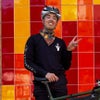“When you get home, your ride is going to tell you this is the longest climb you’ve ever done,” said Santiago Toro, founder of the Colombia-based Scarab Cycles. Boy was that an understatement.
El Sifón is colossal. This climb spans the central range of the Colombian Andes, connecting the towns of Mariquita, Libano, Manizales, and Honda. The ride starts in Armero, totaling 78 km (48 miles) and 3,930 m (12,890 feet) of climbing. If you start in Mariquita as we did, it’s 117 km long (73 miles). With that 117 km comes an outrageous 4,300 m (14,100 feet) of climbing.
It’s four times the length of Mont Ventoux. The Taiwan KOM looks puny in comparison. There might be steeper climbs, but few match the sheer length of this one.
More than anything, however, El Sifón (also known as Old Letras or Alto de Letras) is the single largest monument to a country’s devotion to cycling anywhere in the world. The bike I rode–the Scarab Letras for review–would be an excellent complement to the climb.
Mariquita to Libano
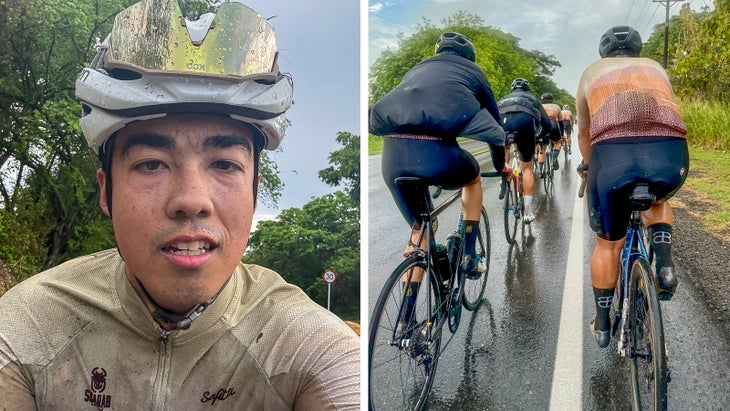
Most folks will want to arrive a few days before riding up El Sifón to acclimate to the elevation. Even with a few days of preparation, every ride around Colombia seems to be overshadowed by what’s about to come. Truthfully, outside of living at elevation, nothing truly prepares you for this climb.
Most will tell you the starting point of the climb is Armero, at roughly 450 meters above sea level. We started in Mariquita, a popular starting point and home base for folks riding up El Sifón, even if it is 30 km away from the more traditional starting point.
Our day started with rain, and lots of it. It wasn’t all that cold; temperatures were roughly 25 degrees Celsius even at our 6 a.m. starting time. It did leave us wondering what kind of weather we might experience on our long day ahead. As it turns out, we seemed to experience it all riding up El Sifón.
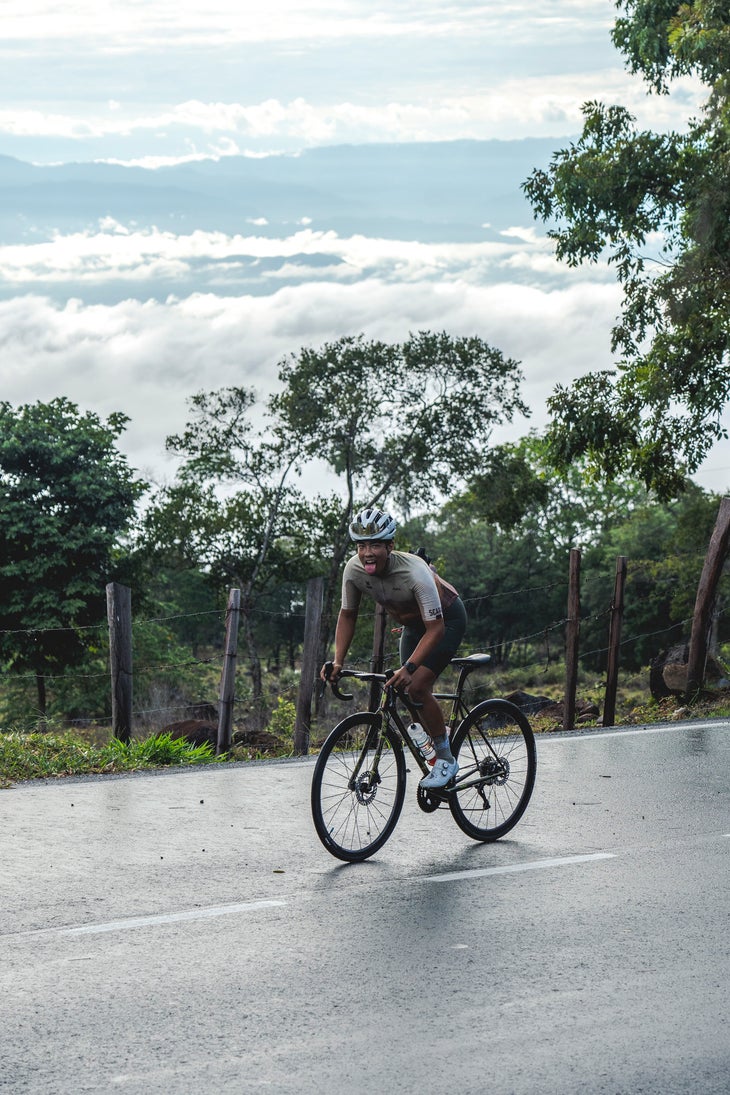
Colombia doesn’t seem to experience seasons, at least not in a traditional sense. Most of that is due to the country’s proximity to the equator. As a result, you get a dry season and a wet season. If you want to experience the four seasons, you choose your elevation and go. And if you ride up El Sifón, you get to experience all four seasons in one ride.
There’s plenty of beauty to be found as you pedal up the hill. But the first striking view has to be of the Magdalena Valley. The morning brought a bit of fog, but rising just above greeted you with a beautiful blanket of cloud, the perfect backdrop to encourage you as the day went on.
This first bit of climbing was when I recognized how safe I felt on the roads. Make no mistake, they’re narrow and full of truck and van traffic. But if a driver passes, they give plenty of space and go slowly. It is shockingly comfortable to be on a bike on these roads, even as you’re inching your way up the road.
My plan going into this was to take it easy going up the lower bits of elevation, and save what I could for the higher elevations. I knew it was going to be cold, and pushing harder would keep me warm.
Libano to Murillo
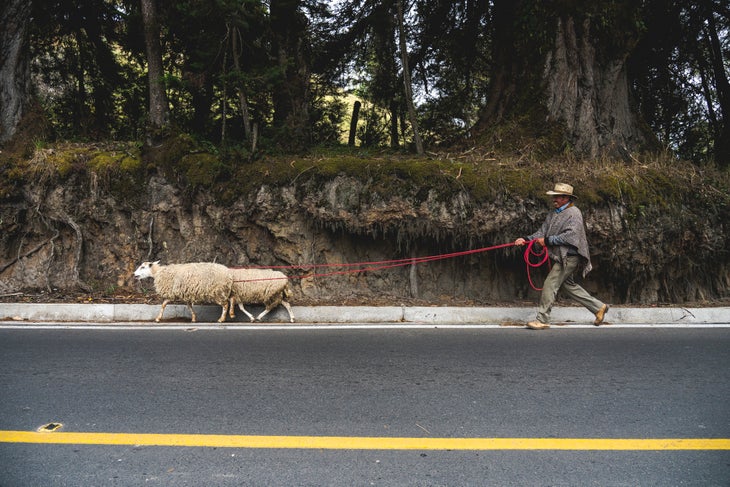
“This is the toughest part of the route, where you really want to be an escarabajo,” Sergio tells as we roll out of Libano.
I’ve always wanted to hear what an escarabajo (a beetle) meant to a Colombian. The phrase seems to refer to the best Colombian cyclists’ ability to traverse the steep climbs of Colombia. Being considered an escarabajo isn’t a nickname you give yourself, but one that is earned through hard work, lots of hours, and a helping of natural talent that all Colombians seem to have in spades. It’s going to take more than riding up El Sifón for me to be a scarab.

El Sifón is an olfactory haven. Lower elevation riding brought humidity and the lush, green landscapes one typically associates with Colombia. Here, coffee plants dot hillsides in perfect spacing and order as if they have been there for centuries. Just about every town greets you with the smells of freshly ground coffee, fruit stands overflowing with papaya and passion fruit, or sweet, grassy fresh-cut sugar cane. Roadside vendors span the busy roads with roses, hydrangeas, and orchids.
The climbs through now-naturalized eucalyptus forests at lower elevations give way to swaths of pine and oak trees higher up. Lower elevations smell vaguely of petrichor and earth, thanks in part to the rain we had at the start of the ride.
The pine scent only grew stronger the more we rode, becoming crisp and sharp with the elevation. Every deep breath reminded me of just how thick the forests are; every pedal stroked reminded my of the slowly thinning air. But that’s a given with a climb like this.

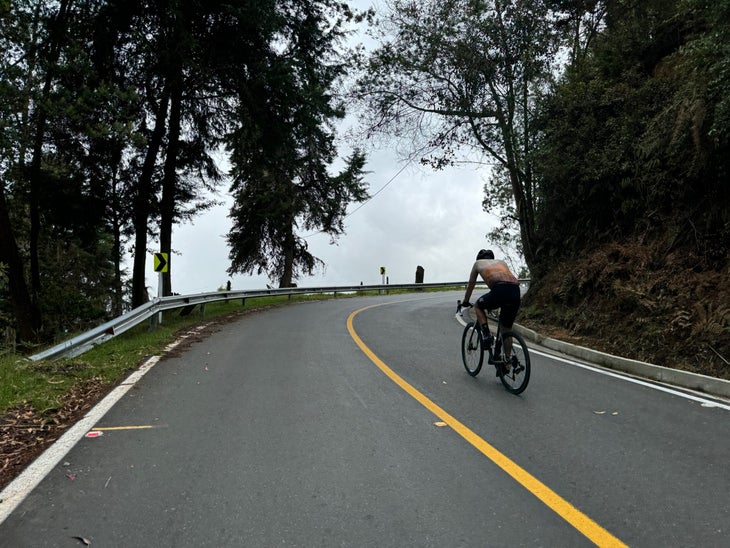
Go even higher up, however — roughly 2,000 to 3,000 meters above sea level — and you find what one friend called “like the Scottish countryside, but prettier.” You get the rolling hills one might experience in the Southern Uplands, just more severe. There’s no reprieve visually; these green expanses only went up or down. Tall grasses abounded despite the cattle dotting the countryside doing their best to keep it all in check.
This part feels tougher than the climb into Libano. Of course it does — the average grade jumps up from about 4 percent to 8 percent, while the air only gets thinner the more you pedal. I wouldn’t call this climb a challenge on its own, but it did make me grateful for my low gear.
We had a stop in the town of Murillo, with clouds threatening precipitation to come. The air is thin here, with the town square sitting at 2,950 m (9,680 feet) above sea level. The plants and trees may not contribute the same lush greens and yellows found at lower elevations, but they’re here nonetheless.
The town square is colorful, with bicycle and motorcycle tires repurposed as an eye-catching contrast to the landscape.

After a stop for snacks, gloves, arm warmers, a vest, and a rain jacket, we were on our way. Spirits were high for just about everyone at this point, but the looming rain clouds did not inspire much confidence in the ride ahead.
Murillo to Alto de Sifón
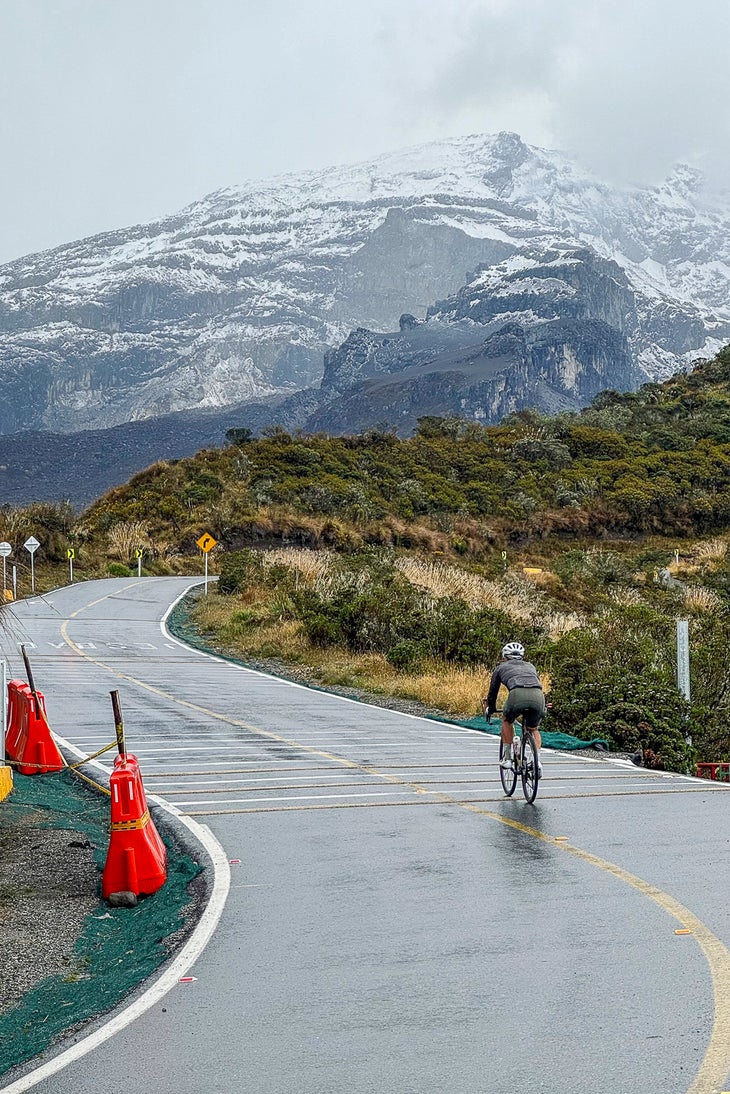
“Please warm up,” I tell myself, as if vocalizing my desire for heat would fix my frozen arms and hands.
Those rolling hills give way to the Páramo, the high-mountain part of the climb. You’d expect the landscape to be austere and devoid of vegetation. That couldn’t have been further from the case, even over 3,000 meters in elevation. And while there isn’t usually too much rain up here, that’s exactly what we got.
I wondered what I did to the universe to experience this type of cold. The rain had come back, but with far cooler (5 degrees C/40 degrees F) temperatures accompanying it. Even without the rain, You’re going to want more layers here. My thin gloves, arm warmers, vest, and rain jacket felt like the bare minimum to stay warm, so long as I kept moving.
The crisp, cold air really starts to get to you high up in these Andes mountains. Gone are the sights and sounds of flora and fauna that graced lower elevations. Here, the silence was deafening. Seemingly only the sound of the bicycle’s chain reverberating against the backdrop of the severe, steep mountain ranges matched the deep breaths that come with riding through such thin air.

All the friends I rode with separated from me at this point; either I was too slow on the descents and they kept going, or it was too cold and wet and I somehow decided to stick it out. All I could think about was how I needed my fingers to start working, but now I didn’t have anyone beside me to commiserate in our chosen hardship.
That is, besides the accompanying moto driver we had. Ismael was a saint, carrying our goods between us and supplying us with extra food or water that we might have wanted along the way up. But once I was on my own, he had the forethought to pull ahead and stop me just in front of Nevado del Ruiz, a snow-covered volcano that keeps this landscape in a delicate balance.
The video, in all of its grainy delight, is here:
View this post on Instagram
Was there a language barrier? Yes. Was I cold and not totally there cognitively? Also yes. Was it my happiest moment of the entire ride? You bet.
Elevation has a way of suppressing your heart rate, particularly if you’re not acclimated. For the last hour or so I couldn’t get myself past 125 bpm, but Ismael’s enthusiasm seemed to light something underneath me. Whether the adrenaline came from sheer joy or a survival instinct to finish the ride, my legs felt light, lively, and ready to finish.
Just at the summit is El Sifón, a small rest stop for weary travelers. A warm cup of aguapanela (hot water, hardened sugar cane, and often a hint of lemon) sat waiting for me as I gingerly removed my wet clothes and prayed for feeling to come back to my extremities. The rain seemed to have eased up, but it was exceptionally cold nonetheless.
Colombia loves cycling

I quickly learned that the seasons don’t change for Colombians. Want a specific season? Go to the elevation that has it. That’s a big reason as to why Medellin is “the City of Eternal Spring.”
Part of the mystique of Colombia is just how different the climbs are here than in any other country in the world. The landscapes change so dramatically. Its unique positioning in the world means you experience effectively four seasons of riding all in a 117 km ride, as we had on this ride up El Sifón.
The climbs are everywhere. Both Medellin and Bogota are surrounded by mountains, with the former having a big 16 km climb that rises from nearly 1,500 meters at its base to 2,500 meters high at the top. This particular climb has a big six-lane road full of fast-flowing trucks and vans going up and over the mountains, but you’ll see a number of cyclists motivated to get up and over the mountains themselves.


After a while, you find what’s perhaps most impressive: the people. Even today, and even in the mountain ranges, the bicycle might just be the most widely used form of transportation in these small towns, at least for the campesinos (peasants). They’re just trying to get to school, blasting past you on an upright single speed bike. Or maybe they’ve loaded up their mountain bike with bags on either side, carrying goods from one part of town to another.
Even if they’re not channeling their inner Rigo or Nairo, they all seem to have that natural talent that makes someone an escarabajo. While those riders feel otherworldly in their raw talent and ability on the bike, riding up El Sifón revealed that their strengths weren’t unique to them as much as they are the result of riding in Colombia.
I can’t wait to go back.

powered by trailforks.com
